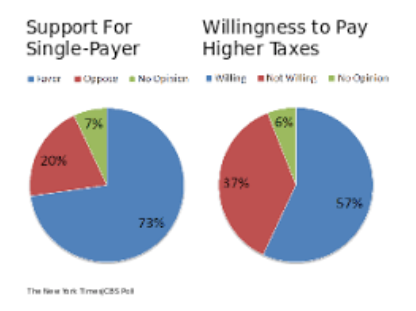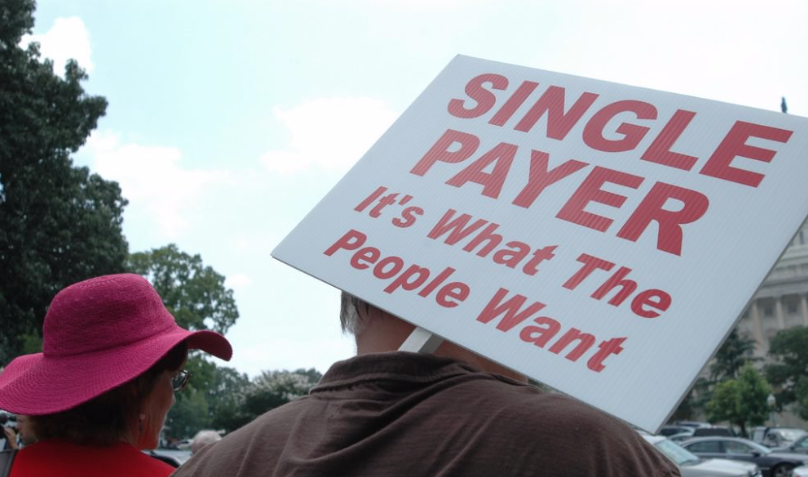CommentsFIRST PERSON-Whether to use a public single-payer government run or a private for-profit insurance company, each system's ultimate effectiveness -- or lack of same -- comes down to the convergence of three factors:
- How much of each dollar goes to healthcare needs, as opposed to insurance company overhead and profit?
- How large, old, and healthy are the pool of users necessary to amortize the total healthcare costs of the entire system?
- And does the entity running the system have any incentive and/or ability to negotiate lower prices for the goods and services it is paying for?
 Under our present for-profit private insurance run system, one-third of every dollar spent on healthcare goes to insurance company overhead costs and profit. The French single-payer government run non-profit healthcare system costs about half of what our system costs, yet by every measure gives better healthcare. The French, with their single-payer system, live longer and don't get as sick as Americans because they receive appropriate medical treatment in a timelier manner from doctors who are not seeing 30-40 patients a day, like American doctors do, with malpractice being a predictable result.
Under our present for-profit private insurance run system, one-third of every dollar spent on healthcare goes to insurance company overhead costs and profit. The French single-payer government run non-profit healthcare system costs about half of what our system costs, yet by every measure gives better healthcare. The French, with their single-payer system, live longer and don't get as sick as Americans because they receive appropriate medical treatment in a timelier manner from doctors who are not seeing 30-40 patients a day, like American doctors do, with malpractice being a predictable result.
And whether a common drug like insulin or those used by smaller populations of patients, the French government negotiates what they are willing to pay for drugs, based on the pharmaceutical companies’ actual costs of development and a reasonable non-gouging profit.
Could our present American system also be a byproduct of the creation of artificial scarcity of doctors by limiting the number of doctors being allowed into medical schools in the United States?
Requiring all Americans and doctors to be part of a single-payer healthcare system would lower the overall costs of a government run system, because the disproportionately high cost of dealing with healthcare for the elderly would be subsidized by a healthier, younger population, who in effect would be prepaying their own healthcare for when they got older.
What somehow has gotten lost in the discussion of single payer vs. private insurance company-run healthcare is the fact that you would get to keep your same doctors under either system. The only differences would be that more doctors would be able to see fewer patients, which would allow them to know their patients' subjective medical history and likely medical needs in the future. They would finally have the time to actually practice medicine.
Continuity of care cannot take place when one is treated by six different primary care physicians in three years. But this happens because doctors who take a job at an HMO when they finish their residency, leave as soon as they or their spouse find something better. They search for a job that more approximates the practice of medicine, as opposed to the 15-minute appointments with their patients, with whom they have no history of treatment.
Over the last five years, I have been wearing a CPAP machine when I sleep to treat a sleep APNEA condition I supposedly had. After reading several articles about apnea and losing 15 lbs. of excess weight using a "silver sneakers" physical exercise program paid for by my Medicare supplement program, I pushed to have another sleep study done, which showed that I no longer had sleep APNEA.
If I had had a real primary care physician, might that doctor have had the time to truly diagnosis and develop alternatives to a one-size-fits-all invasive CPAP machine treatment, which probably wasn't necessary in the first place?
(Leonard Isenberg is a Los Angeles, observer and a contributor to CityWatch. He was a second- generation teacher at LAUSD and blogs at perdaily.com. Leonard can be reached at [email protected].) Edited for CityWatch by Linda Abrams.













